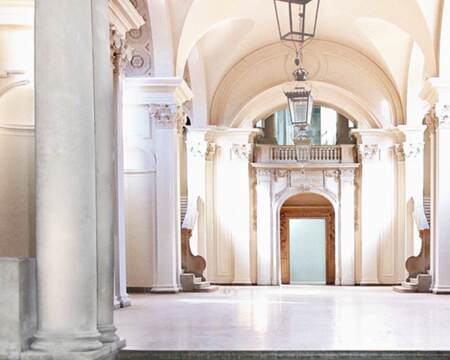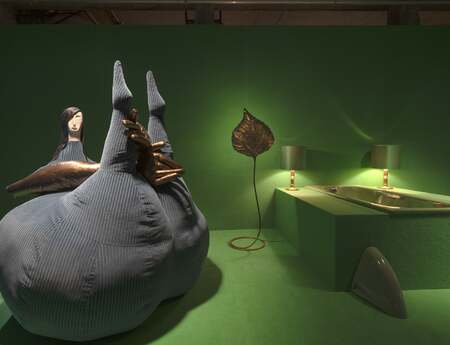
Friedensplatz 1
64283 Darmstadt
Deutschland
Hessisches Landesmuseum Darmstadt
n the late 18th century Landgravine Karoline bequeathed her collection of natural curiosities and physical instruments to her son Ludwig X (1753-1830, since 1806 Grand Duke Ludewig I) that make up the foundation of the scientific collection of today’s HLMD. During his reign (1790-1830) Ludewig I added important collections: glass paintings,altar screens of the German Renaissance, Dutch paintings of the 17th century, copper engravings and natural history objects in addition to the collection of Johann Heinrich Merck, which contained many mammal fossils. In 1802 Ludewig I acquired the entire body of prints by Albrecht Dürer and Rembrandt. In 1805 Baron von Hüpsch, a natural scientist and scholar from Cologne, bequeathed Ludewig I his highly significant collection of art and natural curiosities, including ivory carvings and paintings of the Middle Ages as well as precious minerals and fossils. 52 paintings from the 17th and 18th centuries were acquired from the Basel merchant Nikolas Reber in 1808. Shortly thereafter, the collection of Count Truchseß von Waldburg comprising 81 paintings was purchased, as were 1450 drawings of all major European schools from the collection E. F. J. von Dalberg.
In 1820 Ludewig I presented his collection of art and natural history exhibits to the state in the form of a foundation. Thus he made the collection,which had been continuously assembled by the Landgraves Hessen-Darmstadt since the 17th century, accessible to the public.
Alfred Messel’s Museum Building
In 1817 the collection was moved from the ducal palace to the new palace. However, the steadily growing collection necessitated a new building, which was begun at the instigation of Grand Duke Ernst Ludwig in 1897. The architect was Alfred Messel, a native of Darmstadt, who was famed for the construction of the Wertheim department store in Berlin. For the Darmstadt building, he was confronted with the task of uniting four departments – Zoology, Geology, Picture Gallery and Cultural History – with their highly diverse collections beneath one roof. Outwardly, the building was also required to harmonise with the design and proportions of the palace and additionally to afford the city a new landmark, in the form of a tower.
Messel fulfilled his task by arranging the three collections Zoology, Geology and Gallery above one another in a high north wing, each functioning virtually as an independent museum accessible from the central hall and an imposing staircase. In front of it he placed a lower southern section featuring a number of open courtyards with cultural history exhibits grouped around them. Fully acquainted with the style of the museum building favoured in previous decades and in close consultation with the respective curators of the departments, Messel gave each collection its own specific architectural setting, providing optimal exhibition possibilities, often adapted to conform stylistically to the respective artefacts. He even designed the gratings of the ventilation system, the doorknobs and the showcases, so that the museum itself constituted an artwork. Upon its completion and opening, it was accordingly universally acclaimed by the public, the media and the experts.
